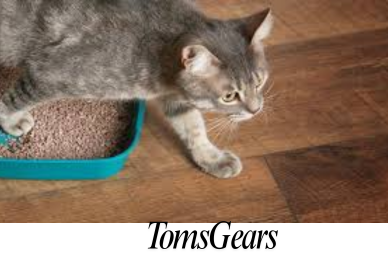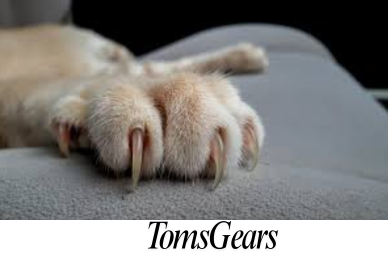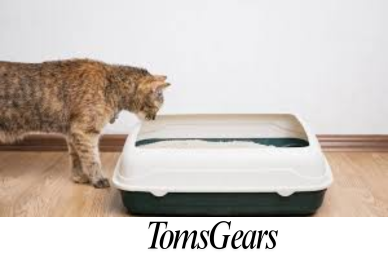Do Heated Cat Beds Help with Arthritis?
Cats, like humans, can suffer from arthritis as they age, leading to discomfort and reduced mobility. For cat owners seeking ways to alleviate their feline friend’s pain, heated cat beds have emerged as a potential solution. The short answer is: Yes, heated cat beds can help cats with arthritis by providing pain relief, improving mobility, and enhancing overall comfort. This article will explore the benefits of heated cat beds for arthritic cats, how to choose the right one, and other important considerations for managing feline arthritis.
Understanding Feline Arthritis
Feline arthritis, also known as osteoarthritis, is a degenerative joint disease that affects many cats, particularly as they age. It occurs when the cartilage in joints breaks down, leading to inflammation, pain, and reduced mobility. Common symptoms include:
- Reluctance to jump or climb
- Stiffness, especially after resting
- Decreased grooming
- Irritability or changes in behavior
- Weight gain due to reduced activity
Studies have shown that up to 90% of cats over 12 years old may have some degree of arthritis, though it often goes undiagnosed due to cats’ tendency to hide pain.
What Are Heated Cat Beds?
Heated cat beds come in two main types: electric and self-warming. Electric beds use low-voltage heating elements to provide warmth, while self-warming beds use reflective materials to trap and redirect the cat’s body heat. Both types offer benefits for cats, particularly those with arthritis.
Benefits of Heated Cat Beds for Arthritic Cats
Pain Relief
Heat therapy has long been recognized as an effective way to alleviate joint pain and stiffness. For cats with arthritis, a heated bed can provide consistent, gentle warmth that helps to:
- Increase blood flow to affected areas
- Reduce muscle tension
- Decrease joint stiffness
A study published in the Journal of Feline Medicine and Surgery found that cats with osteoarthritis showed improved mobility and reduced pain scores after consistent use of heat therapy.
Improved Mobility
The warmth from heated beds can help increase flexibility and range of motion in arthritic joints. This improved mobility can lead to:
- Easier movement for daily activities
- Increased willingness to play and exercise
- Better overall quality of life
Many cat owners report seeing their arthritic cats become more active and playful after introducing a heated bed into their environment.
Enhanced Comfort
Beyond the physical benefits, heated cat beds provide a cozy and inviting space for cats to rest. This psychological comfort is particularly important for cats dealing with chronic pain. A comfortable resting place can lead to:
- Better sleep quality
- Reduced stress and anxiety
- Improved overall well-being
How to Choose the Right Heated Cat Bed
When selecting a heated bed for your arthritic cat, consider the following factors:
Size and Shape
Choose a bed that’s large enough for your cat to stretch out comfortably. Some cats prefer beds with raised sides for added security, while others may prefer a flatter surface for easier access.
Temperature Settings
Look for beds with adjustable temperature settings. The ideal temperature range for most cats is between 80-90°F (27-32°C). Some high-end models offer customizable heat zones to target specific areas of discomfort.
Safety Features
Prioritize safety when choosing an electric heated bed. Look for features such as:
- Automatic shut-off timers
- Chew-resistant cords
- Overheating prevention mechanisms
Are Heated Cat Beds Safe for Your Cat?
While heated cat beds are generally safe, it’s important to take precautions:
- Always follow the manufacturer’s instructions
- Regularly inspect the bed for signs of wear or damage
- Never leave the bed unattended for long periods when in use
- Consult with your veterinarian before introducing a heated bed, especially if your cat has other health conditions
What Other Treatments Can Relief Cat Arthritis?
While heated beds can provide significant relief, they should be part of a comprehensive approach to managing feline arthritis. Other important elements include:
Veterinary Care
Regular check-ups, medications, and supplements can play a crucial role in managing arthritis. Your vet may recommend:
- Non-steroidal anti-inflammatory drugs (NSAIDs)
- Joint supplements like glucosamine and chondroitin
- Physical therapy or acupuncture
Environmental Modifications
Make your home more accessible for your arthritic cat by:
- Providing easy access to litter boxes, food, and water
- Installing non-slip surfaces and ramps
- Using elevated food and water bowls to reduce strain on joints
Lifestyle Changes
Maintaining a healthy weight and encouraging gentle exercise can significantly impact your cat’s arthritis management:
- Implement a weight management plan if necessary
- Engage in low-impact play sessions
- Consider underwater treadmill therapy if available in your area
Wrapping Up
Heated cat beds can indeed help cats with arthritis by providing pain relief, improving mobility, and enhancing overall comfort. When combined with proper veterinary care, environmental modifications, and lifestyle adjustments, they can significantly improve the quality of life for arthritic cats. Always consult with your veterinarian to develop a comprehensive arthritis management plan tailored to your cat’s specific needs.
Remember, every cat is unique, and what works for one may not work for another. Pay attention to your cat’s preferences and behavior, and be prepared to make adjustments as needed. With patience and care, you can help your arthritic cat live a more comfortable and enjoyable life.






